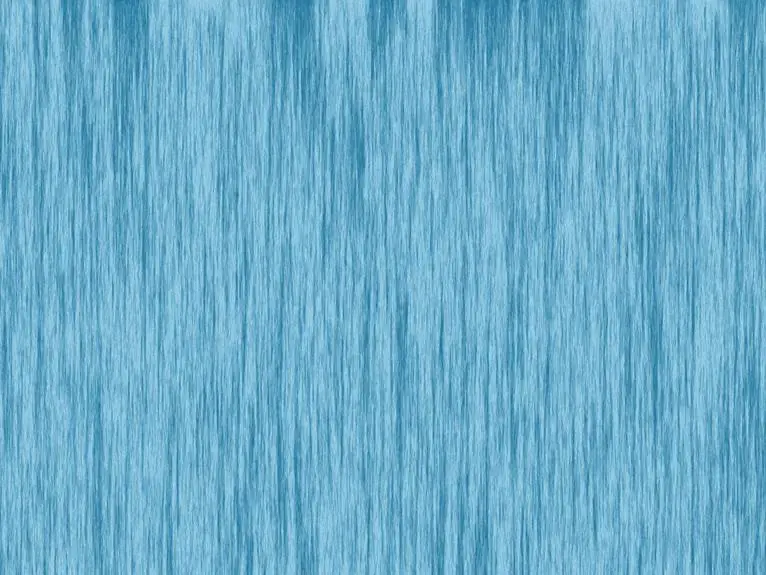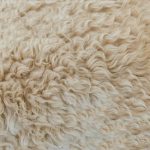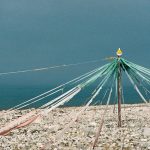When you consider textured fabrics, Dotted Swiss might surprise you with its versatility compared to others like chiffon or organza. While chiffon's lightness makes it beautiful for layered pieces, it lacks the structure that Dotted Swiss offers, creating a unique balance of whimsy and practicality. Organza, on the other hand, can come off as too formal for casual wear. So, how does Dotted Swiss measure up in terms of adaptability across different styles and uses? Understanding this can significantly influence your choices in fabric selection for both fashion and home decor.
Table of Contents
Overview of Dotted Swiss
Dotted Swiss is a lightweight, semi-sheer fabric known for its delightful textured dot pattern, making it a popular choice for various clothing and home decor. You'll find it often used in dresses, blouses, and curtains, where its airy feel adds an elegant touch. The fabric typically features small, raised dots that create a charming visual appeal, allowing it to stand out without being overwhelming.
When you touch Dotted Swiss, you'll notice its soft texture, which enhances comfort while still providing structure. This fabric comes in various colors, enabling you to coordinate with your personal style or existing decor seamlessly. Whether you're crafting a romantic outfit or refreshing your living space, Dotted Swiss offers the versatility you need.
Dotted Swiss is also easy to sew, which makes it a favorite among DIY enthusiasts. You won't need advanced skills to create beautiful pieces. Its durability allows it to withstand regular wear and washes without losing its pleasant look.
Unique Attributes of Dotted Swiss
Characterized by its playful dot pattern, Dotted Swiss offers a unique blend of texture and elegance that sets it apart from other fabrics. These delicate dots, often embroidered onto the fabric, create a whimsical vibe while maintaining a level of sophistication. This combination makes Dotted Swiss perfect for various applications, from stylish dresses to charming home décor.
One of the standout attributes of Dotted Swiss is its lightweight quality. You'll find it's easy to layer without feeling heavy, making it ideal for changeable climates. Its semi-sheer nature brings an inviting softness, allowing light to filter through while still offering modest coverage. This versatility extends to color choices, as Dotted Swiss fabrics are available in a myriad of hues, making it easy to match any theme or palette.
Moreover, the fabric's easy-care properties make maintenance a breeze. You can toss it in the machine without worrying about excessive fading or wear. For those seeking a fabric that beautifully balances playfulness with sophistication, Dotted Swiss stands out as a top contender, inviting you to explore its endless design possibilities.
Dotted Swiss Vs. Chiffon
When comparing Dotted Swiss and chiffon, you'll notice distinct differences in texture, weight, and versatility. Both fabrics have unique attributes, but they serve different purposes in fashion design.
Here are some key points to consider:
- Texture: Dotted Swiss features small raised dots, adding a playful and textured dimension, while chiffon boasts an airy, smooth feel that drapes elegantly.
- Weight: Dotted Swiss is generally heavier than chiffon, making it a bit sturdier, whereas chiffon is lightweight and flows beautifully.
- Versatility: Dotted Swiss suits structured garments like blouses and skirts, while chiffon is perfect for flowing dresses and layering.
- Care: Chiffon can be more delicate and may require gentler washing, while Dotted Swiss is often easier to handle.
Ultimately, your choice will depend on the specific look and function you're going for. By understanding these differences, you can make a better-informed decision when selecting fabric for your next project.
Dotted Swiss Vs. Organza
Comparing Dotted Swiss to organza reveals intriguing differences in texture, structure, and use in various design applications.
Dotted Swiss features a soft, lightweight cotton or polyester fabric adorned with raised dots, lending it a playful, whimsical feel. In contrast, organza is a crisp, translucent fabric, typically made from silk or polyester, known for its structured appearance and subtle sheen.
When choosing between the two, think about your design goals. If you're crafting a delicate yet fun garment, Dotted Swiss might be your best bet. It drapes beautifully, making it ideal for dresses or blouses that require a soft touch.
However, for projects needing more shape or volume, like evening wear or structured overlays, organza stands out. Its firmness helps create dramatic elements, such as ruffles or petticoats.
Both fabrics can add depth to a design, but their distinct properties lead to varied results. Consider your project's context, as Dotted Swiss creates a more casual vibe, while organza exudes elegance.
Ultimately, the choice hinges on the aesthetic you're aiming for and how you envision the final look.
Dotted Swiss Vs. Lace
When you compare Dotted Swiss and lace, you'll find key differences in texture and appearance that can influence your fabric choice.
Dotted Swiss offers a playful, subtle pattern, while lace tends to exude elegance with intricate designs.
Understanding these distinctions will help you select the right fabric for your next project.
Texture and Appearance Differences
Dotted Swiss and lace each offer unique textures and appearances, showcasing distinct characteristics that cater to different aesthetic preferences.
When you're choosing between them, it's helpful to consider their individual qualities to better understand how they can fit into your style.
Here are some key differences that you might notice:
- Dotted Swiss: Features small, raised dots that create a playful, whimsical look.
- Lace: Typically has intricate patterns and designs that lend an elegant, sophisticated vibe.
- Transparency: Lace often has a sheerer quality, offering more transparency compared to Dotted Swiss.
- Weight and Thickness: Dotted Swiss usually has a lightweight, crisp feel, while lace can vary greatly in weight depending on the design.
Suitable Applications and Uses
Understanding the differences in texture also helps you identify the most suitable applications for Dotted Swiss and lace in your wardrobe. While both fabrics add distinctive flair, they each shine in unique contexts. Dotted Swiss has a playful, lighthearted feel, making it perfect for casual wear, summer dresses, or children's clothing. Its subtle dots provide visual interest without overpowering a look.
On the other hand, lace exudes elegance and sophistication. It's great for evening wear, bridal attire, or special occasions when you want to make a statement. Lace's intricate patterns tend to demand attention, while Dotted Swiss is often more subdued and fun.
Here's a comparison of suitable applications for both fabrics:
| Fabric Type | Suitable Applications | Ideal Occasions |
|---|---|---|
| Dotted Swiss | Casual dresses, blouses | Daytime outings, picnics |
| Lace | Evening gowns, bridal wear | Weddings, formal events |
| Dotted Swiss | Children's apparel | Summer parties |
| Lace | Tablecloths, curtains | Elegant dinners |
| Dotted Swiss | Accessories (bags, scarves) | Casual get-togethers |
Selecting the right fabric will elevate your style for any event!
Applications of Dotted Swiss
You'll find Dotted Swiss fabric widely used in fashion, home decor, and craft projects for its delicate appearance and versatility. Its lightweight, airy feel makes it perfect for various applications. Here are some popular uses you might consider:
- Dresses and Blouses: Create charming summer dresses or blouses that capture a classic, feminine style.
- Window Treatments: Use Dotted Swiss for sheer curtains or valances that softly diffuse light while adding texture to your space.
- Bedding Accents: Incorporate Dotted Swiss in pillowcases, shams, or bed skirts, giving your bedroom a whimsical touch.
- Children's Clothing: Design sweet outfits for little ones; the playful polka dots can enchant both kids and parents alike.
With its charming texture and adaptability, Dotted Swiss adds an elegant touch to any project you embark on.
Whether you're sewing a new outfit or transforming your living room, this fabric proves to be an excellent choice for your crafting needs.
Tips for Working With Dotted Swiss
When working with Dotted Swiss, it's important to take special care to maintain its delicate texture and avoid fraying edges. Start by pre-washing the fabric to remove any sizing that could affect your sewing. Use a gentle cycle and cold water, then air dry or tumble dry on low to minimize shrinkage.
When cutting Dotted Swiss, opt for sharp scissors or a rotary cutter to ensure clean edges. To prevent slipping while sewing, use lightweight pins or fabric weights to secure your pattern pieces in place. Always use a fine needle, like a 70/10 or 80/12, and a straight stitch to enhance the fabric's natural drape.
If you're hemming or finishing edges, consider using a narrow rolled hem or a zigzag stitch to keep edges neat without adding bulk. Press seams carefully with a low heat setting to avoid scorching the fabric.
Lastly, if you need to embellish or embroider, choose light thread to prevent overwhelming the delicate design of Dotted Swiss. With these tips in mind, you'll find that working with Dotted Swiss can be both satisfying and rewarding!
Frequently Asked Questions
Can Dotted Swiss Be Used for Home Décor Projects?
Absolutely, you can use dotted swiss for home décor projects! Its delicate texture and playful dots add charm to curtains, cushions, or tablecloths, making your spaces feel inviting and stylish. You'll love the results!
How Does Dotted Swiss React to Heat During Sewing?
When you sew with dotted Swiss, it's important to use a lower heat setting. High temperatures can cause the fabric to melt or warp, so keep your iron cool to ensure a crisp finish.
Is Dotted Swiss Suitable for Outdoor Garments?
Dotted Swiss isn't the best choice for outdoor garments. It's lightweight and doesn't offer durability or weather resistance. Instead, consider using fabrics designed specifically for outdoor wear that can withstand the elements better.
What Are the Care Instructions for Dotted Swiss?
To care for your dotted Swiss, gently wash it in cold water on a delicate cycle, and avoid bleach. Hang it to dry or tumble dry on low to preserve its unique texture and shape.
Can Dotted Swiss Be Layered With Other Fabrics?
Yes, you can definitely layer dotted swiss with other fabrics! Its lightweight nature and unique texture allow you to create interesting combinations, enhancing both style and depth in your outfits or home decor projects.
- How Does Ring Spun Cotton Affect Garment Fit and Shape Retention? - August 13, 2024
- What Are the Challenges in Producing Ring Spun Cotton? - August 13, 2024
- Is Ring Spun Cotton Suitable for Plus-Size Clothing? - August 13, 2024







